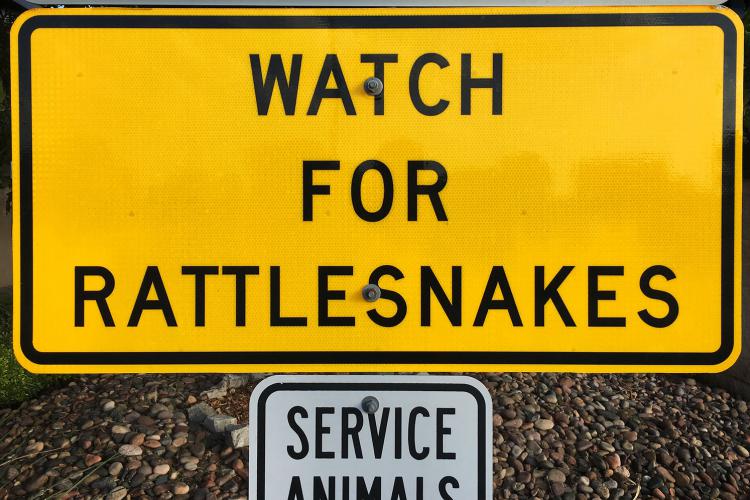
JPS Health Network has seen a sharp increase in the number of patients coming to the Emergency Department seeking treatment for venomous snake bites.
“We’ve seen six or seven bite cases over the past few weeks, definitely an upward trend,” said Dr. Todd Phillips, MD, Chief of the Division of Medical Toxicology at JPS. “The ones we’ve seen come mostly from copperheads. But we’ve seen a couple from water moccasins, too.”
Most of the bites were to the hands of their recipients, according to Phillips. One person was gardening and reached out to pick a tomato when she was struck. Another was cooking outside at the time of the bite. While those types of accidents will happen from time to time, one victim invited problems when he tried to play around with a snake, insisting there was nothing to worry about because he’d never been bitten before. Phillips warned it’s never a good idea to antagonize a snake. If you’re in doubt about whether it’s venomous, play it safe and keep your distance.
“Fortunately, none of the cases were life-threatening,” Phillips said of the people who sought treatment at JPS. “Usually, snake bites aren’t fatal to humans. Still, it’s always a good idea to seek medical attention if you’ve been bitten.”
Unattended snake bites can cause problems for surrounding tissue and in the blood, the doctor said, even if the deliverer of the strike is non-venomous.
Several types of venomous snakes can be found in Texas. In addition to the copperheads and water moccasins – also known as cotton mouths – responsible for bites seen at JPS, rattlesnakes and coral snakes are native to the area. Still, Phillips said fear of a bite is no reason not to enjoy the outdoors. People just need to be aware we’re sharing nature with other creatures and watch their step when they’re in a place where their likely to encounter a snake.
Snakes often seek high vegetation to conceal themselves, according to Phillips. They also can be found in piles of wood, in hollow tree stumps or around places where sources of food – including mice and other small rodents or frogs and toads -- are likely to be found.
While some people err by not getting snakebites inspected by a doctor, others do more damage than good trying to treat the wound themselves. Here are some snakebite mistakes to avoid:
- Don’t try to suck out the venom from a bite suffered by yourself or someone else
- Don’t try to cut the bite to try to drain the venom
- Don’t waste money on snakebite kits available at sporting goods stores, they don’t work
- Don’t put a tourniquet on the limb which was bitten
- Don’t put ice or anything else on the wound before a doctor can look at it
- Don’t try to catch the snake or bring it with you to the hospital. Even if it’s dead, the reptile can reflexively bite for hours, potentially exposing yourself or others to danger
